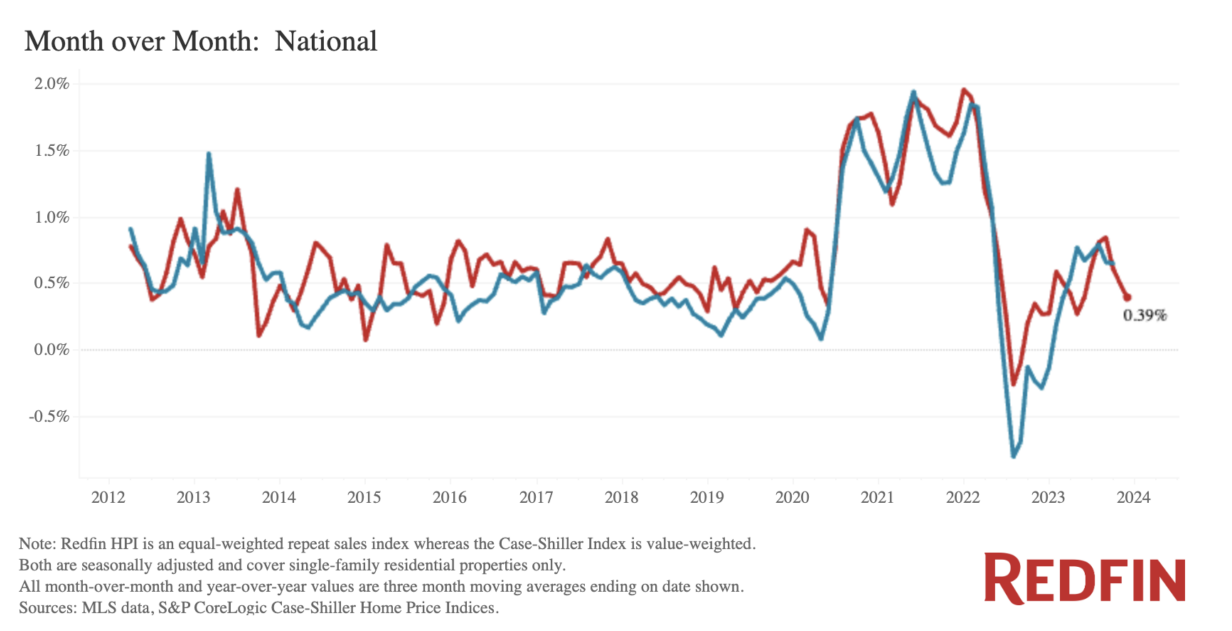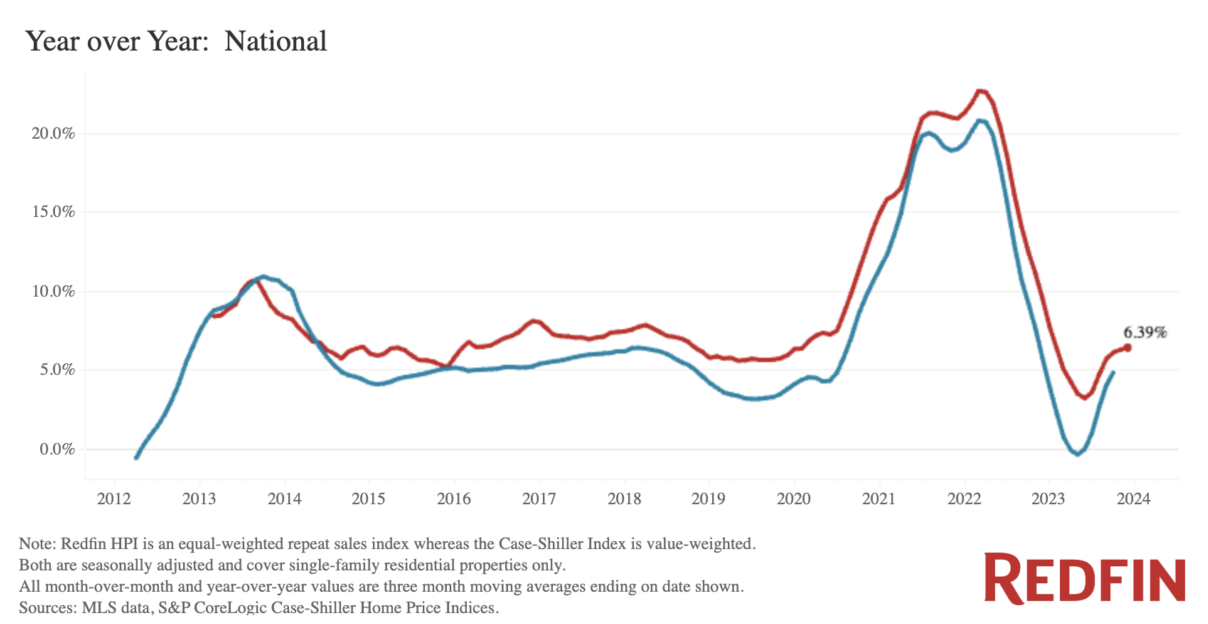U.S. home prices climbed 0.4% month-over-month in December, according to the Redfin Home Price Index (RHPI), representing the smallest increase since June. The report also found that December represented the third straight month of slowing price growth, with prices rising approximately 6.6% year-over-year.
Similar to the S&P CoreLogic Case-Shiller Home Price Indices, the RHPI is published more than a month earlier.
"Many home purchases that closed in December were negotiated in November, when mortgage rates were near the highest level in over two decades," said said Sheharyar Bokhari, Redfin Senior Economist. "That likely depressed home price growth because buyers were grappling with limited purchasing power."

Housing supply remains limited, but what does this mean for home prices?
Home price growth could have also slowed in December due to housing shortage easing slightly, giving homebuyers more options to choose from, as new listings rose 0.1% to the highest seasonally adjusted level since September 2022. But unfortunately, housing supply remains far below pre-pandemic levels, preventing home prices from dropping further as buyers compete for a limited share of homes for sale.
On a positive note, homebuying conditions have been improving. Price growth is slowing, supply is on the rise, and mortgage rates have fallen significantly since their October peak. Price growth also appears to be normalizing as the housing market becomes more balanced, with the 0.4% gain in December roughly in line with monthly increases that occurred in the years leading up to the pandemic.
“Homebuyers can take solace in the fact that prices are unlikely to balloon again like they did during the pandemic homebuying frenzy, but they probably won’t fall any time soon, either,” said Bokhari. “That’s because supply isn’t growing enough to bring prices down, and mortgage rates are no longer falling enough to drive prices up significantly.”

Home prices dropped the fastest in Austin, Texas, and climbed the fastest in Chicago.
Fifteen of the 50 most populous U.S. metro areas posted month-over-month price decreases in December, though all but one of those declines were less than 1%. In Austin, Texas, prices fell 1.1%—the biggest drop among the metros Redfin analyzed. Next came Oakland, CA (-0.9%), Sacramento, CA (-0.8%), Miami (-0.6%), and Nashville, TN (-0.6%).
In Chi-Town—Chicago—home prices rose 2.6% month-over-month—the largest increase among the 50 most populous metros. Rounding out the top five are San Jose, CA (1.7%), Pittsburgh (1.6%), Virginia Beach, VA (1.4%), and Charlotte, NC (1.1%).
To read the full report, including more data, charts, and methodology, click here.

 DSNews The homepage of the servicing industry
DSNews The homepage of the servicing industry









